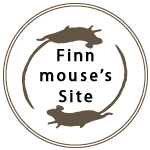Genetics
C-locus
2. Intense chinchilla, ci
Mouse genetics guru Silvers believed ci to be a lost recessive, but recent odd varieties popping up have made fanciers think otherwise. Unlike what the name may have one believe, the gene isn't stronger in effect when compared with chinchilla cch. Instead, it gives colours with stronger colouration - closer to C than with cch.
ci dilutes black pigment only very, very slightly and you can't tell a a/a B/* C/* D/* P/* mouse apart from a/a B/* ci/ci P/* by the looks alone. Red pigment gets diluted drom red to orangish/lemony yellow. ci does not dilute brown pigment.
2.1. Homozygous Forms
2.1.1. ci and Ay
Ay/* ci/ci D/* P/* is a unstandarsized variety called apricot, as well as the pink eyed version of this genotype. The latter is rare due to the linkage of the P & C loci. With d/d added, you'll get a colder shade of colour nearing cream.
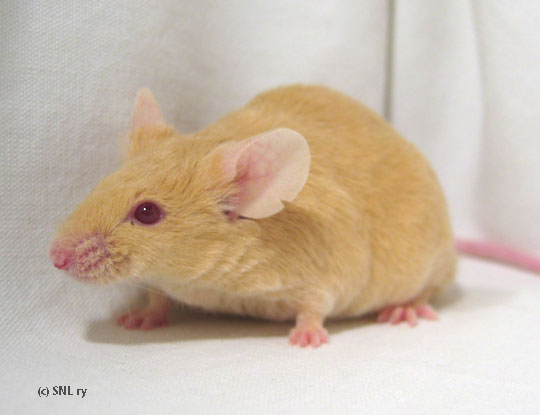
Ay/a B/* ci/ci D/* p/p |
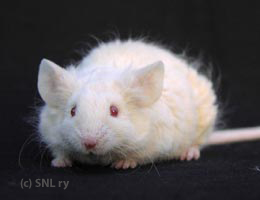
Ay/a B/* ci/cch D/* p/p. |
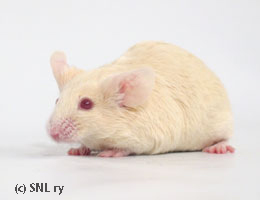
Same genotype as her father above. |
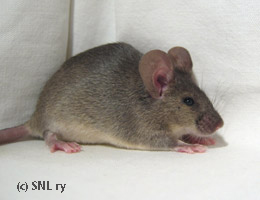
"Lemon agouti" Aw/Aw B/* ci/cch D/* P/* |
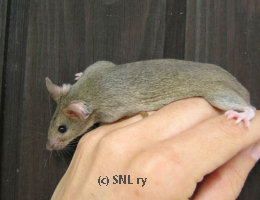
"Lemon agouti" Aw/Aw B/* ci/cch D/* P/* |
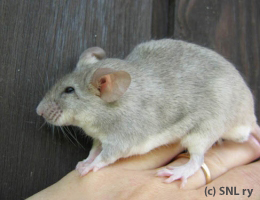
Dilute of former: Aw/Aw B/* ci/cch d/d P/* |
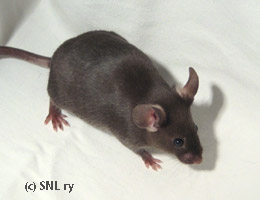
This burmese has too dark body colour, not showing points properly. ci/ch? |
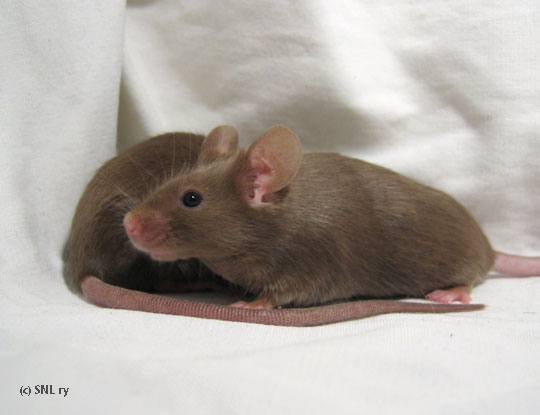
Notice the shades - could the mouse behind be ci/c? |
2.1.2. ci and Aw
With Aw the final result of ci/ci depends on the depth of the Aw mouse's belly colour: Aw can give belly colour ranging from tan to fox. The deeper the colour to begin with, the yellower the Aw/* ci/ci mouses's belly - the lighter, the whiter. Top colour doesn't change noticeably.
2.1.3. ci and A
With agouti ci/ci gives a mouse passing for an agouti.
2.1.4. ci and at
at/* ci/ci mice have yellowish bellies instead of tan.
2.1.5. ci and a
Black eyed a/a ci/ci mice do not show noticeable dilution, pink eyed white varieties look lighter.
2.2. Heterozygous Forms
Like all c-locus recessives, ci is fully reessive to C and partially dominant over its lower recessives.
2.2.1. ci/cch
Ay/* ci/cch D/* P/* (and ...p/p) are in between apricot and cream in colour. Aw/* ci/cch D/* P/* is so called lemon agouti: lighter than agouti, yellower than chinchilla, light belly with usually yellower sides to the belly. With A, the mouse resembles light agouti. at/* ci/cch D/* P/* is "lemon bellied" intermediary form between tan and fox. a/a on black background look like a poor black, others do not differ noticeably from their C/* counterparts.
2.2.2. ci/ce
Lethal red and ci/cch gives "mock cream", revealing its true genotype when odd young pop up. Aw brings "mock chinchilla" - it can pass for a chinchilla but "breeds wrong". Using the same logic, A/A and A/a ci/cch are "mock grey agouti". With at:n and a:n one should get about the same as with cch/cch, possibly a tad lighter. Tan gets diluted into (poor) fox.
2.2.3. ci/ch
Ay/* ci/ch might be an intersting phenotype, but would require testing. Body colour should lighten, but what would happen to the points?
Aw and A ci/ch aren't that striking: "agouti burmese fox" and "agouti burmese". a/a ci/ch is a dark Burmese, at the same but foxed.
2.2.4. ci/c
These genotypes do not make that intersting phenotypes, I'd venture to say.
